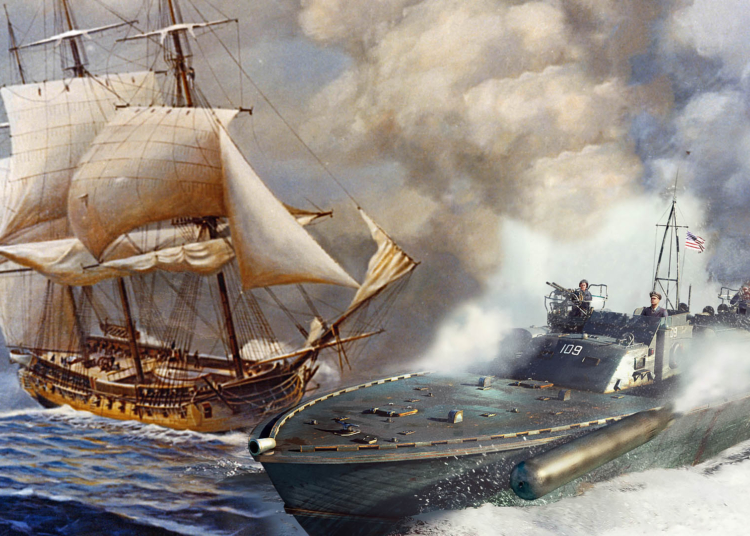This content provides an introduction to the history of naval warfare. It explores the evolution of ship-to-ship combat from ancient times to the modern era. The article discusses ancient naval warfare, including the development of the trireme by the Greeks. It then moves on to the “Golden Age of Sail” in the 16th century, where larger and more powerful ships dominated battles. The ironclad era in the mid-19th century introduced steam-powered warships clad in iron plates. The two World Wars witnessed further advancements in naval warfare, with battleships, aircraft carriers, submarines, and naval aviation playing crucial roles. The content concludes by highlighting the highly specialized and technologically advanced nature of modern naval warfare.
Introduction
Naval warfare has been an integral part of human history since ancient times. Throughout the centuries, ships have played a crucial role in shaping the outcomes of wars and conflicts. From the mighty battleships of the 20th century to the swift and agile warships of the present day, naval warfare has evolved significantly over time. In this article, we will delve into the fascinating history of ship-to-ship combat and explore the major developments and strategies employed throughout different eras.
Ancient Naval Warfare
The origins of naval warfare can be traced back to ancient civilizations such as the Egyptians, Greeks, and Phoenicians. During this era, ships were primarily used for transportation and trade, but they also served as war vessels. The Greeks, renowned for their naval prowess, developed the famous trireme – a long and narrow vessel with three rows of oars on each side. The maneuverability and speed of the triremes revolutionized naval warfare, providing a significant advantage during conflicts.
The Age of Sail
In the 16th century, naval warfare entered the era of the “Golden Age of Sail.” The development of larger and more powerful ships, such as galleons and frigates, enabled European powers to establish dominance on the high seas. Battles during this period were predominantly fought through broadside tactics, where ships would line up parallel to each other and unleash devastating barrages from their cannons. These engagements often lasted for hours, as crews reloaded cannons and tried to outmaneuver their opponents.
The Ironclad Era
The mid-19th century marked a significant milestone in naval warfare with the advent of ironclads – steam-powered warships clad in iron plates. The first major engagement between ironclads occurred during the American Civil War in the Battle of Hampton Roads, where the USS Monitor clashed with the CSS Virginia (formerly the USS Merrimack). The ironclads revolutionized naval warfare by rendering wooden ships obsolete and introducing a new era of armored vessels.
World Wars and Beyond
The two World Wars witnessed massive advancements in naval warfare. Battleships, aircraft carriers, submarines, and naval aviation played critical roles in conflict. World War I saw the infamous Battle of Jutland between the British Royal Navy and the Imperial German Navy, a clash of dreadnought battleships that highlighted the importance of naval supremacy. The rise of airpower in World War II introduced a new dimension to naval battles, with aircraft carriers becoming crucial assets for both offensive and defensive operations.
The Modern Era
In modern times, naval warfare has become highly specialized and technologically advanced. Stealth technology, cruise missiles, and advanced anti-ship systems have transformed the nature of ship-to-ship combat. Naval forces now focus on precision strikes, securing sea lines of communication, and projecting power across the oceans. The advent of unmanned underwater vehicles and drones has further expanded the capabilities of naval forces, enabling them to conduct surveillance, mine detection, and even covert operations.
Conclusion
Ship-to-ship naval warfare has continuously evolved throughout history, adapting to new technologies and strategies. From the primitive triremes to the modern formidable warships, naval forces have played a vital role in shaping the outcomes of conflicts. The study of naval warfare provides valuable insights into the progression of military tactics, technology, and geopolitical developments. As we progress into the future, it will be fascinating to see how naval warfare continues to adapt and innovate, ensuring the domination of the seas in an ever-changing global landscape.












